Chapter 14 Autonomic Nervous System The Autonomic Nervous

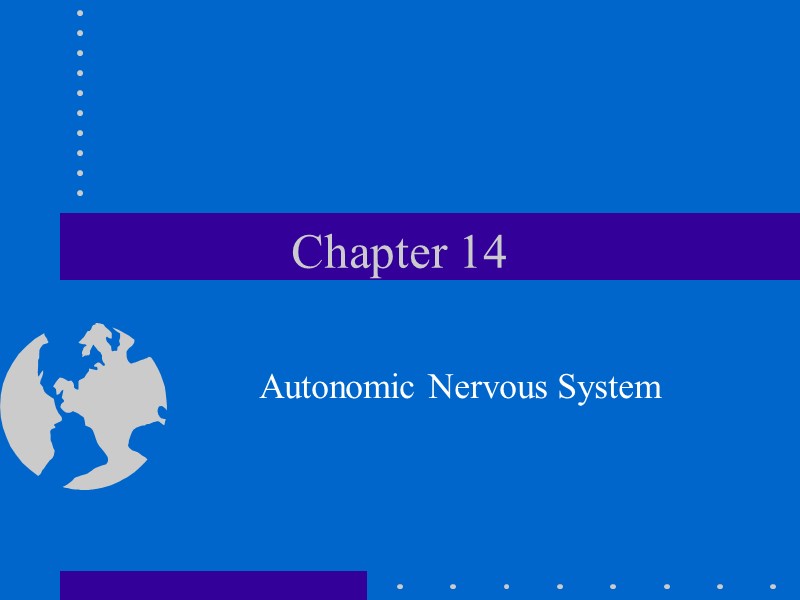
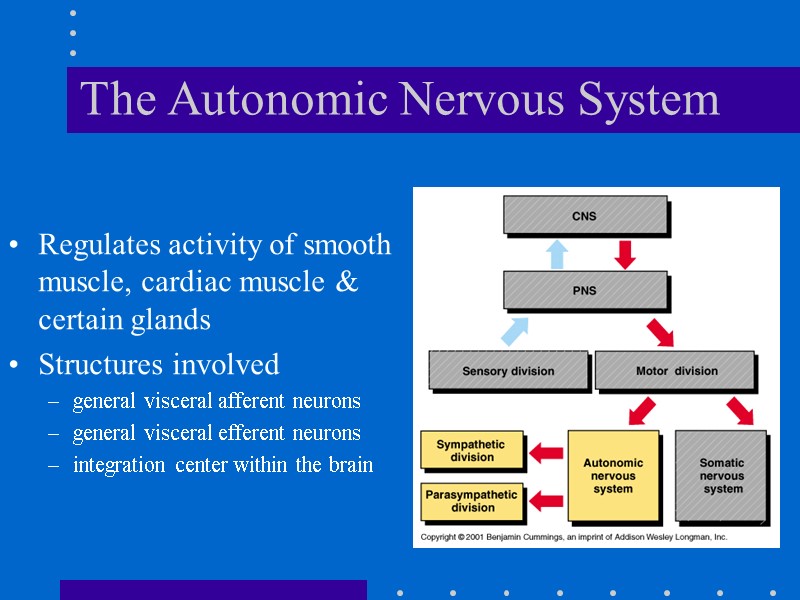
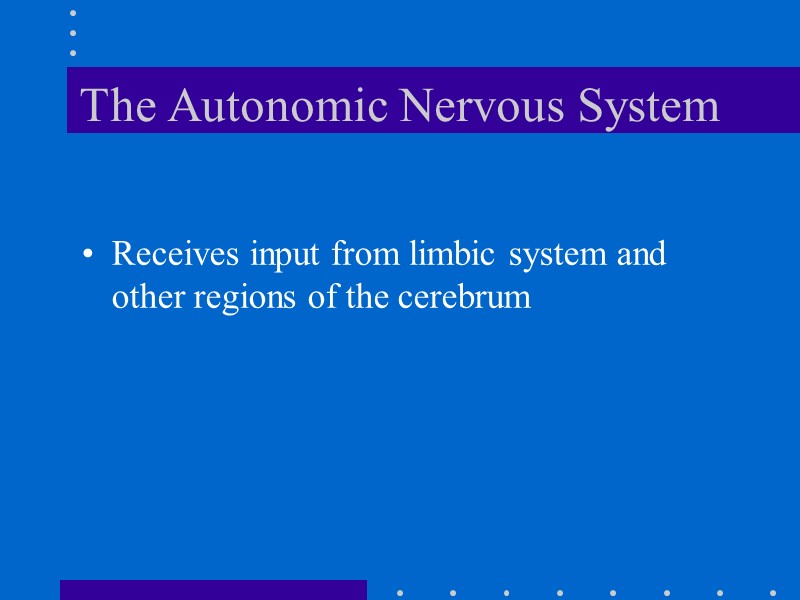
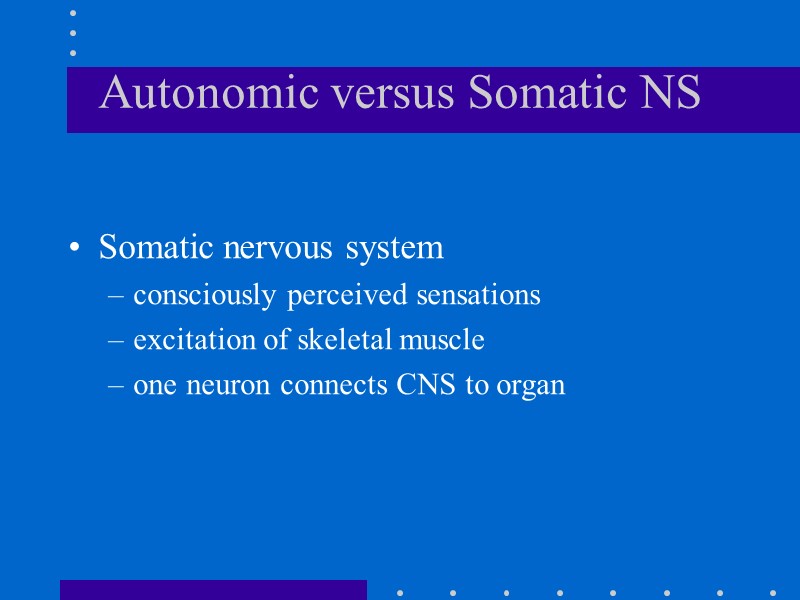
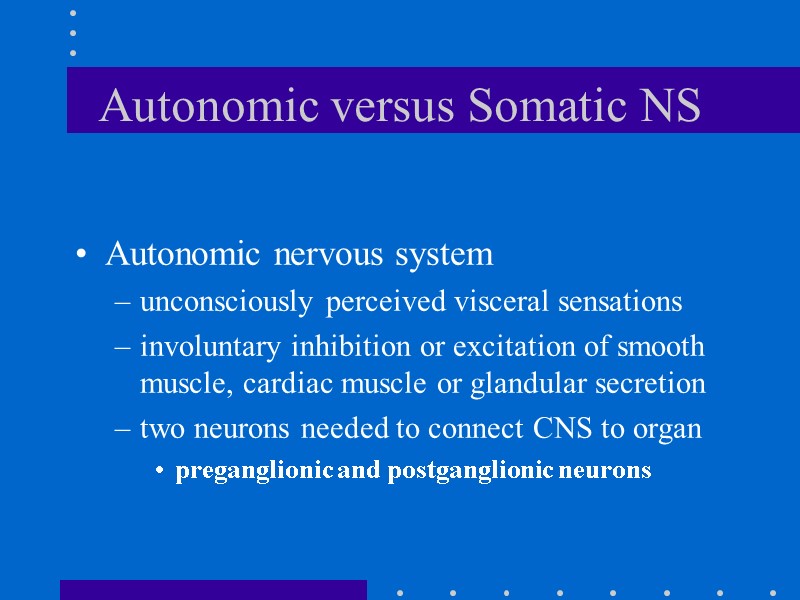
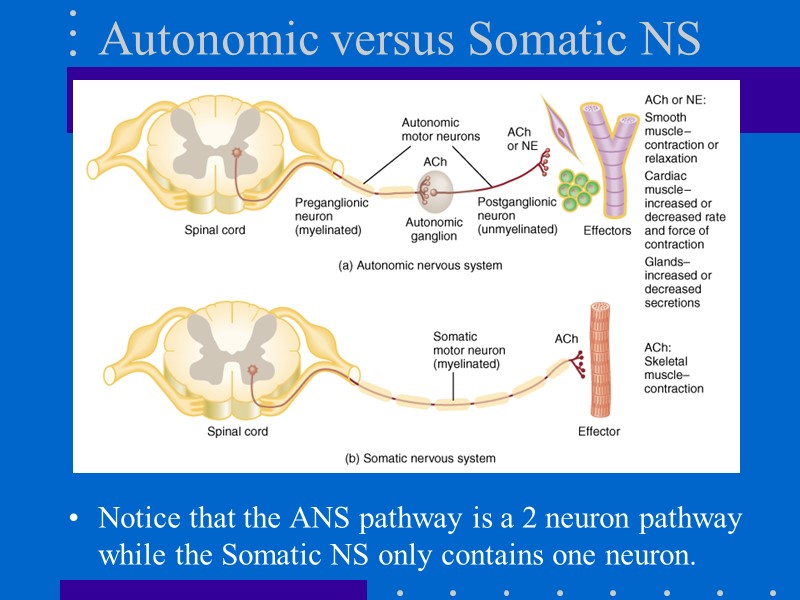
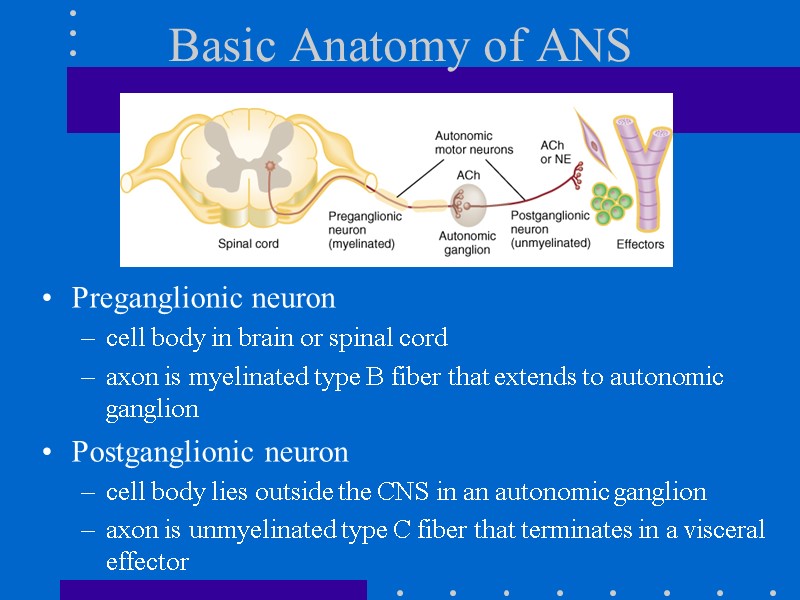
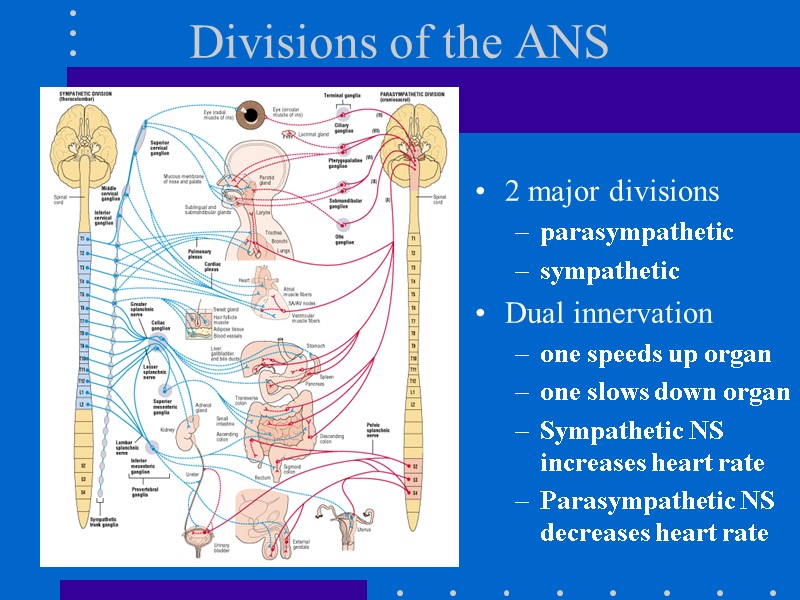
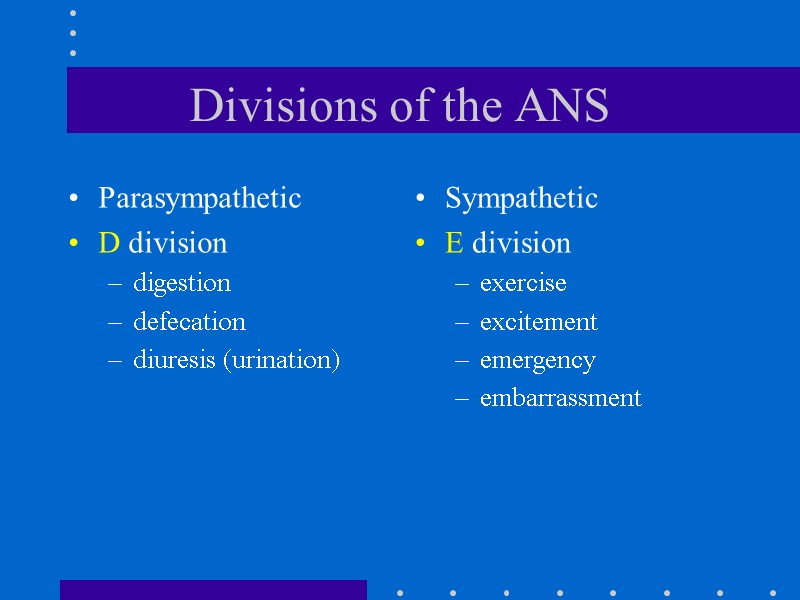
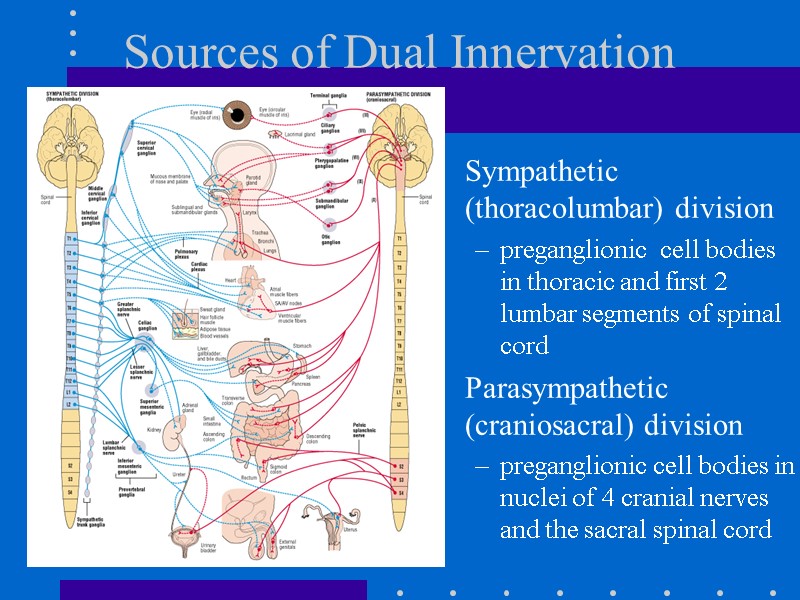

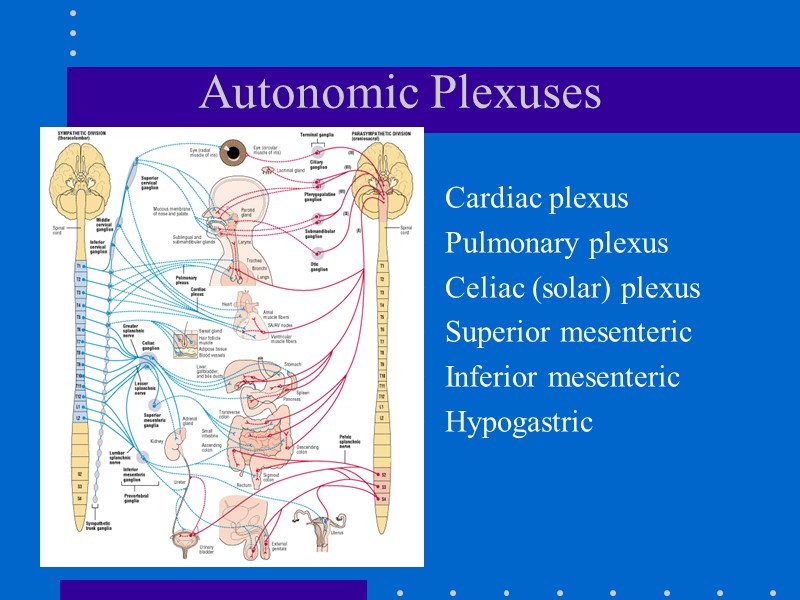
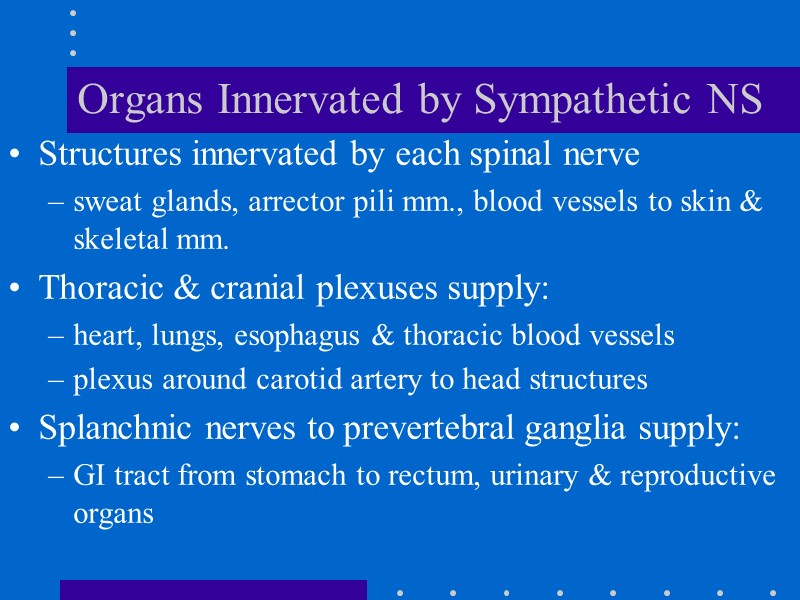
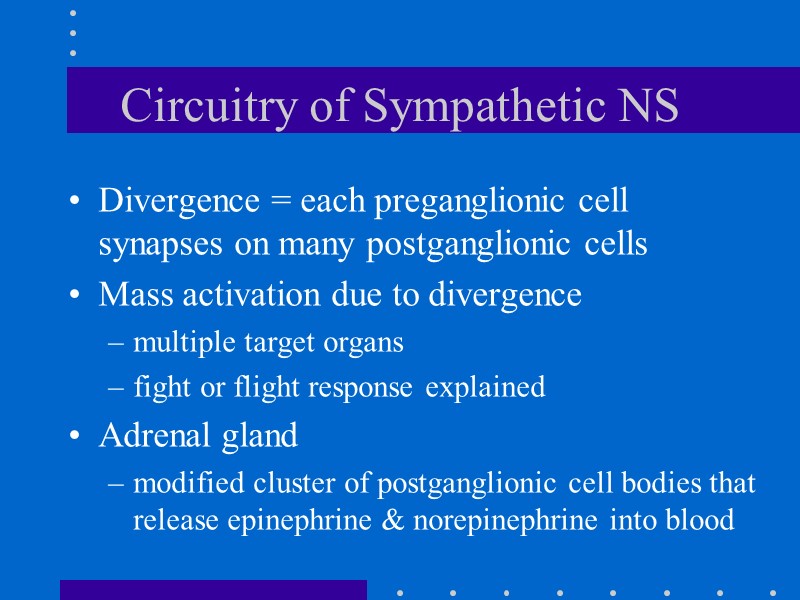
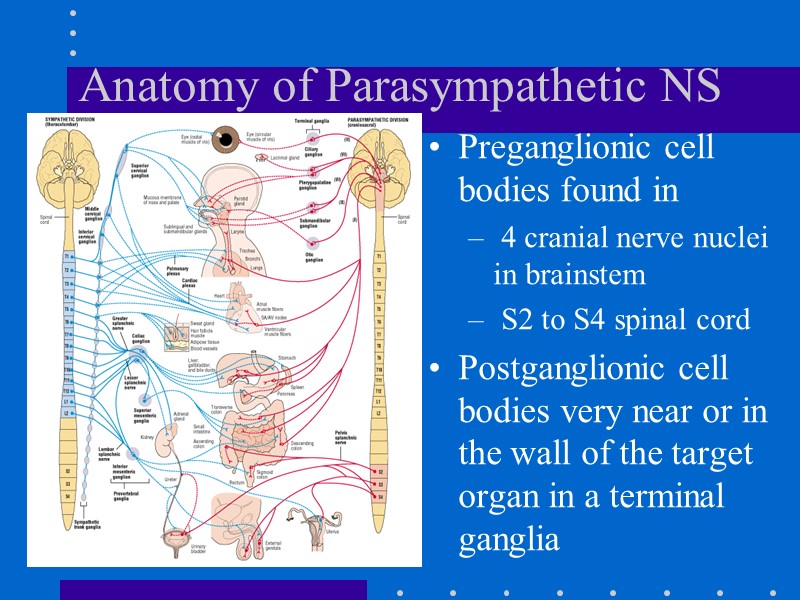
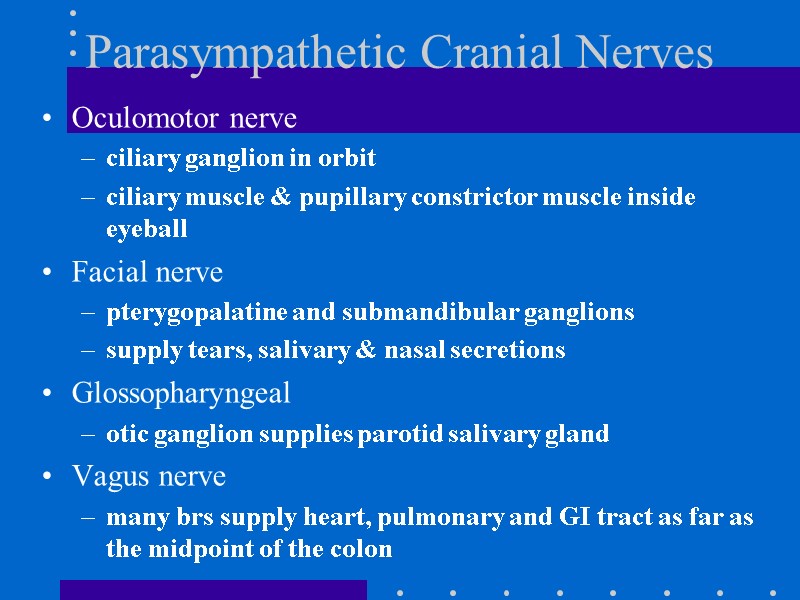
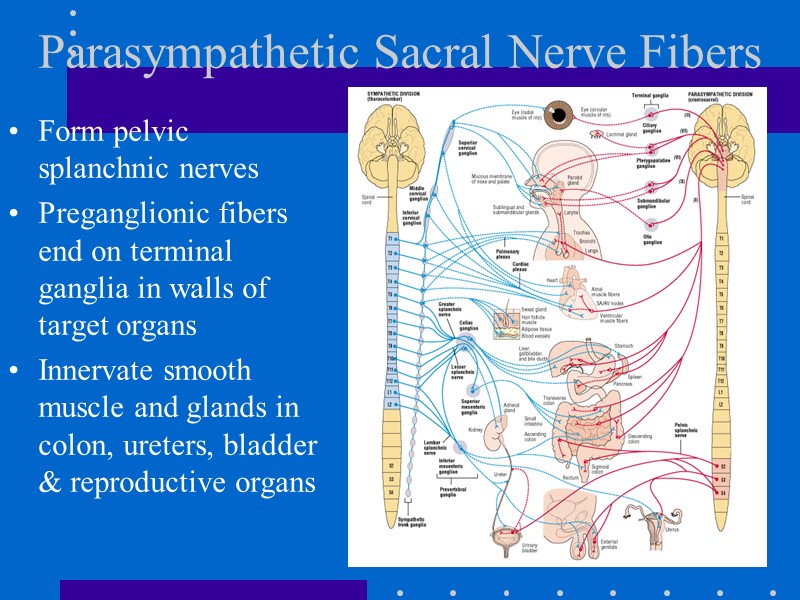
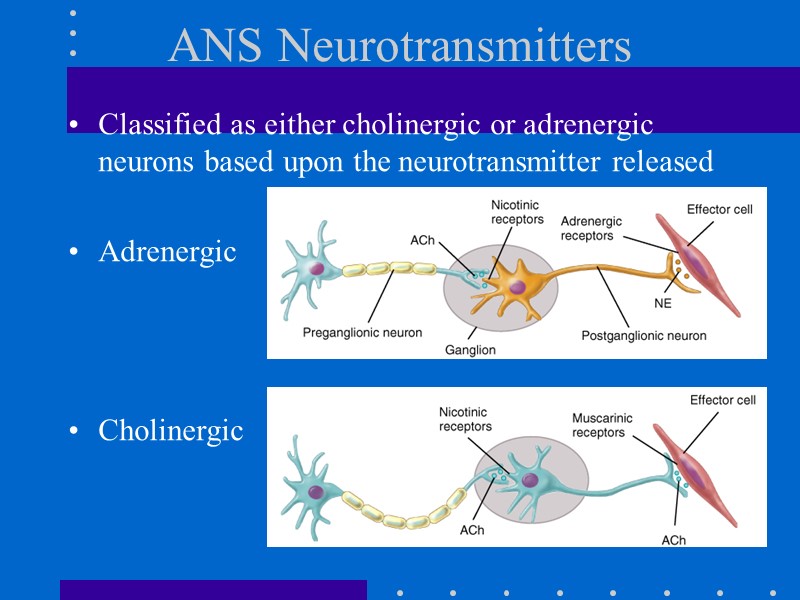
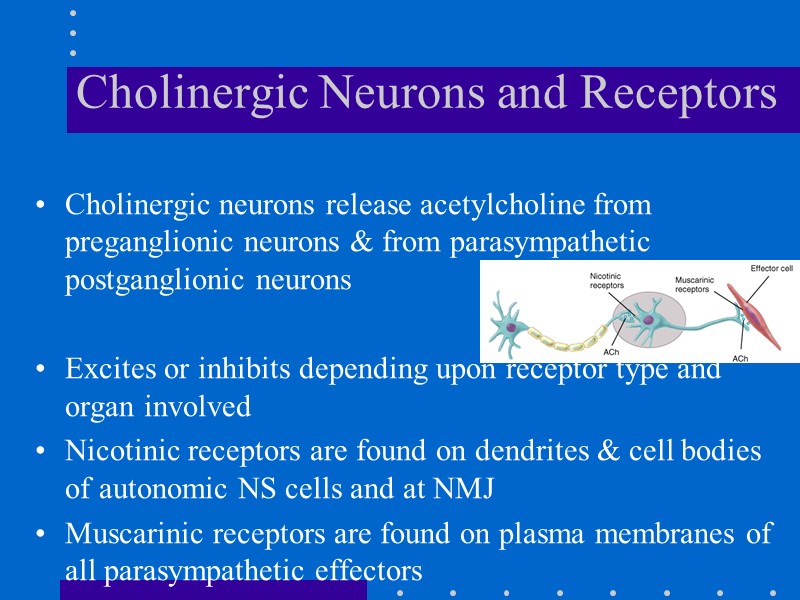
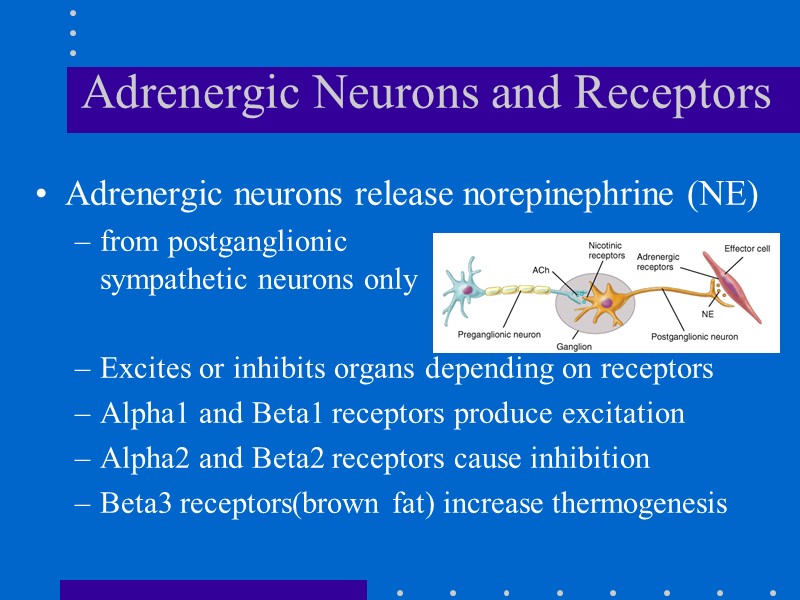
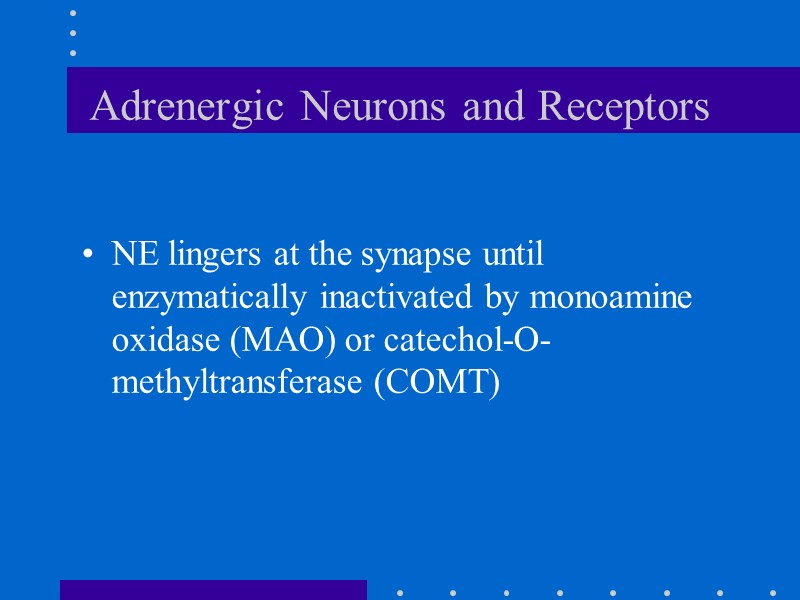
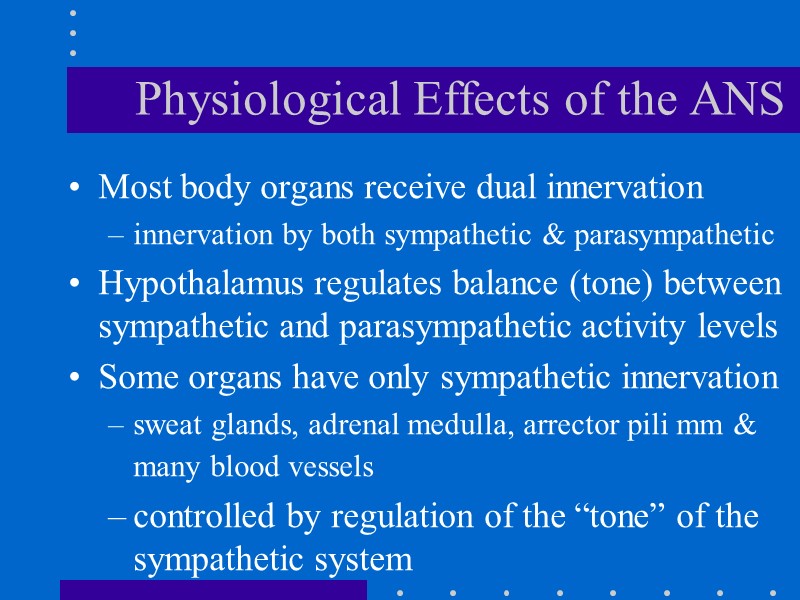

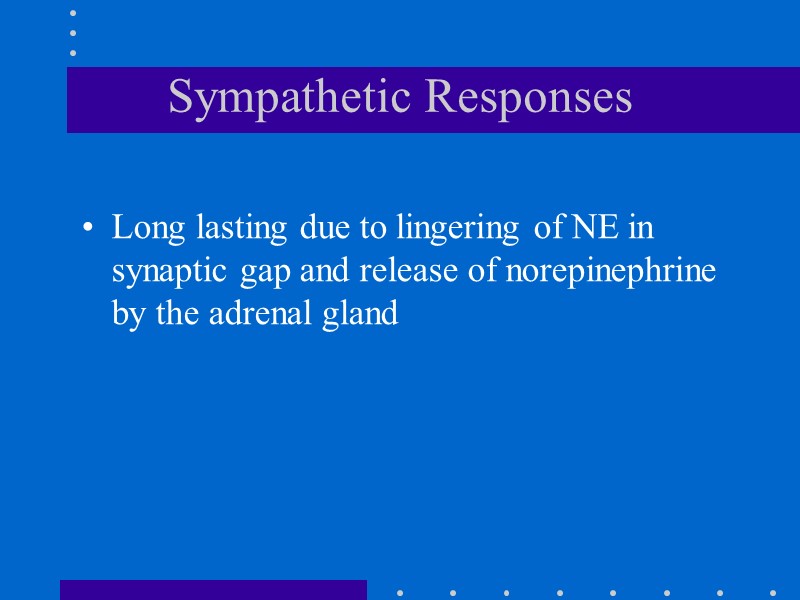
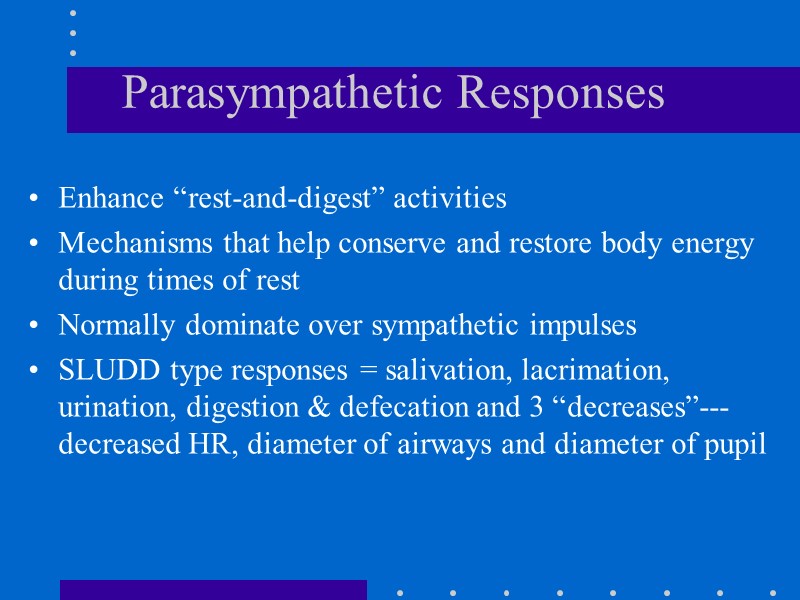
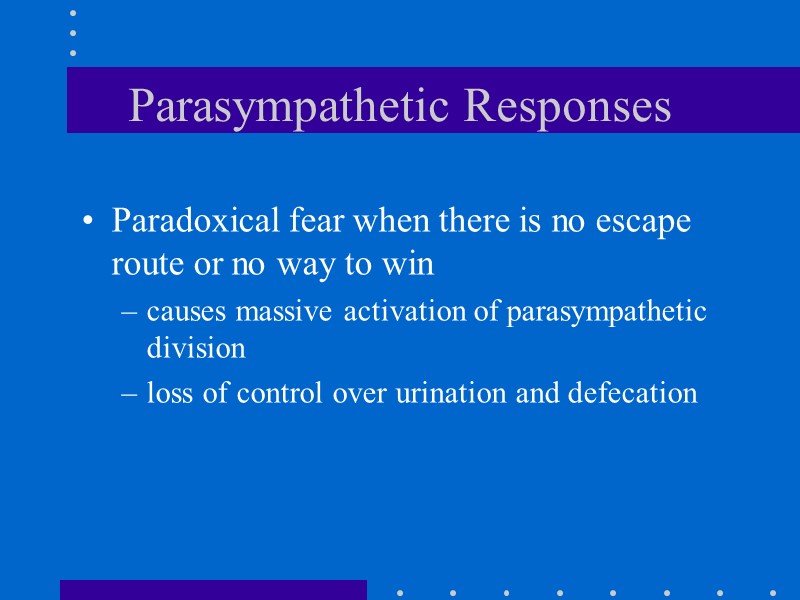
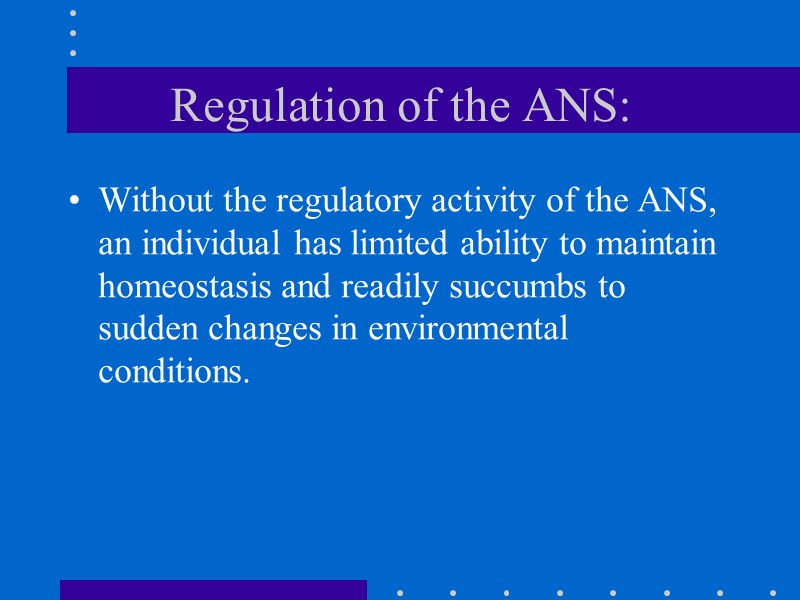
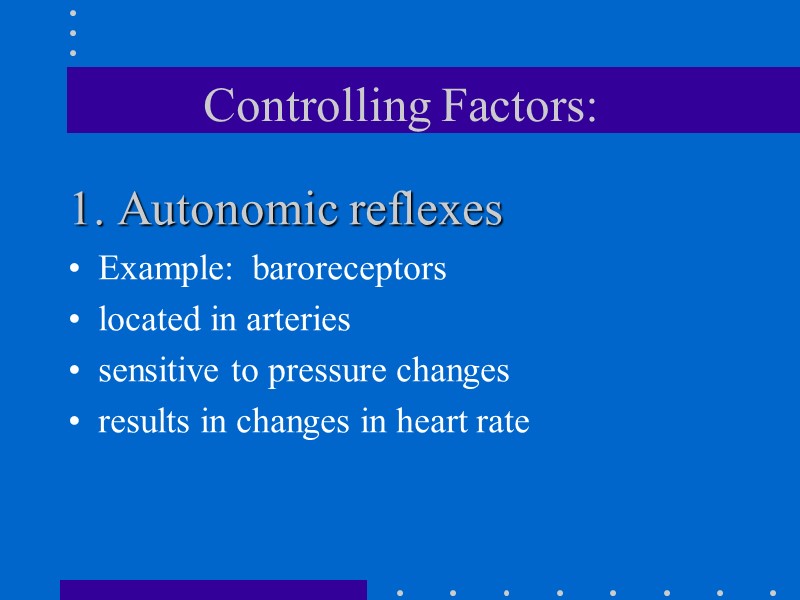
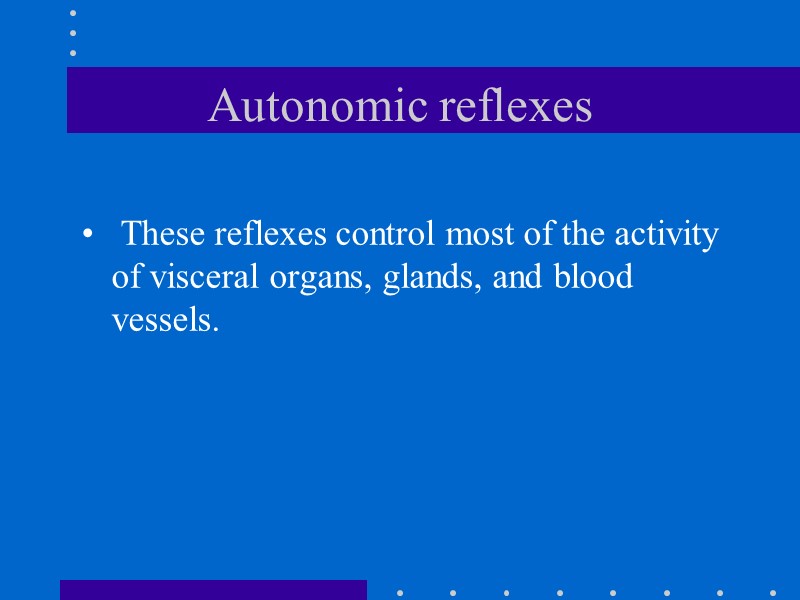
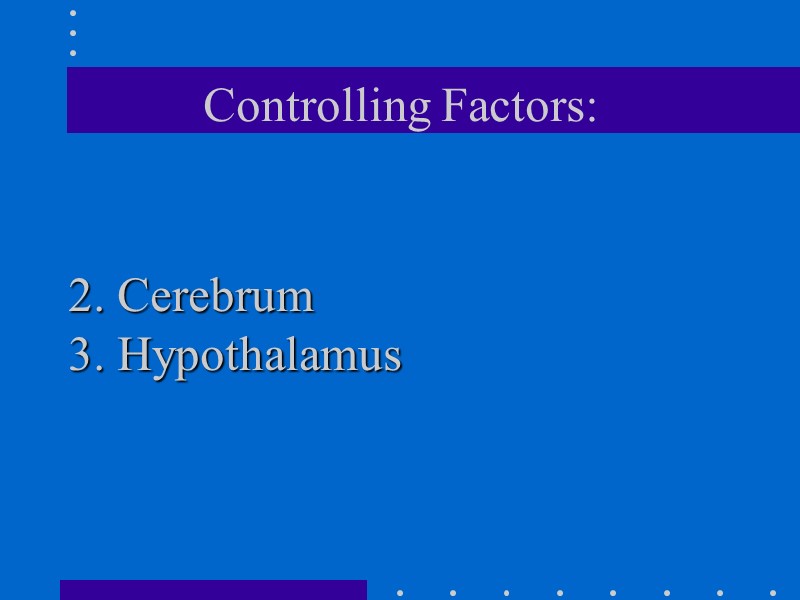
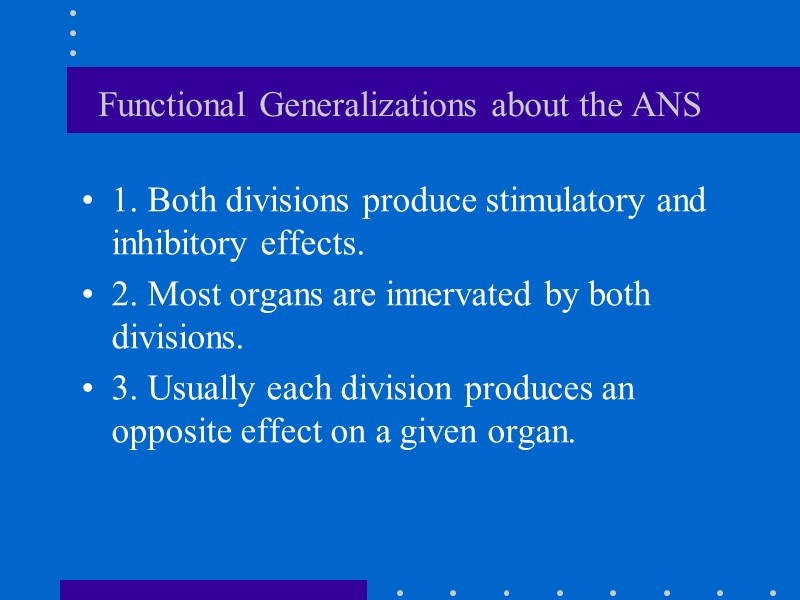

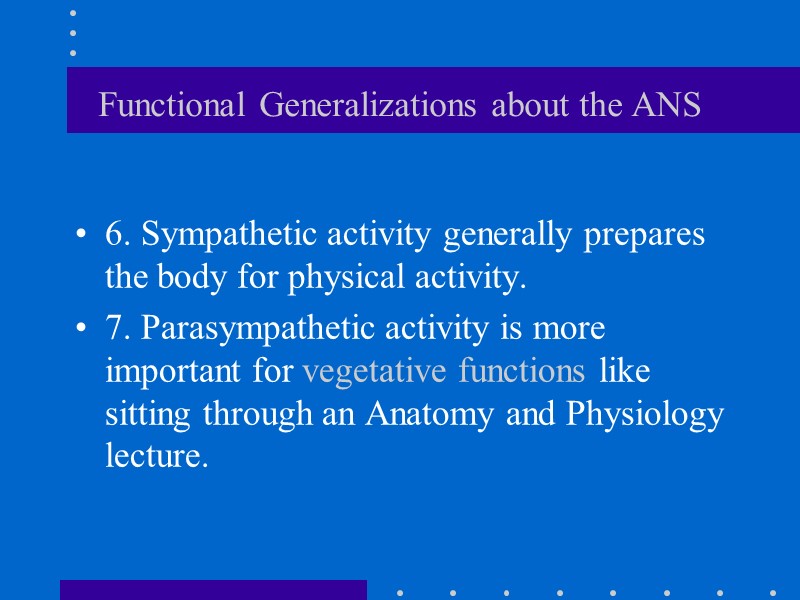
35236-dlya_vns_02_chapter_14_ans_-_sp05.ppt
- Количество слайдов: 33
 Chapter 14 Autonomic Nervous System
Chapter 14 Autonomic Nervous System
 The Autonomic Nervous System Regulates activity of smooth muscle, cardiac muscle & certain glands Structures involved general visceral afferent neurons general visceral efferent neurons integration center within the brain
The Autonomic Nervous System Regulates activity of smooth muscle, cardiac muscle & certain glands Structures involved general visceral afferent neurons general visceral efferent neurons integration center within the brain
 The Autonomic Nervous System Receives input from limbic system and other regions of the cerebrum
The Autonomic Nervous System Receives input from limbic system and other regions of the cerebrum
 Autonomic versus Somatic NS Somatic nervous system consciously perceived sensations excitation of skeletal muscle one neuron connects CNS to organ
Autonomic versus Somatic NS Somatic nervous system consciously perceived sensations excitation of skeletal muscle one neuron connects CNS to organ
 Autonomic versus Somatic NS Autonomic nervous system unconsciously perceived visceral sensations involuntary inhibition or excitation of smooth muscle, cardiac muscle or glandular secretion two neurons needed to connect CNS to organ preganglionic and postganglionic neurons
Autonomic versus Somatic NS Autonomic nervous system unconsciously perceived visceral sensations involuntary inhibition or excitation of smooth muscle, cardiac muscle or glandular secretion two neurons needed to connect CNS to organ preganglionic and postganglionic neurons
 Autonomic versus Somatic NS Notice that the ANS pathway is a 2 neuron pathway while the Somatic NS only contains one neuron.
Autonomic versus Somatic NS Notice that the ANS pathway is a 2 neuron pathway while the Somatic NS only contains one neuron.
 Basic Anatomy of ANS Preganglionic neuron cell body in brain or spinal cord axon is myelinated type B fiber that extends to autonomic ganglion Postganglionic neuron cell body lies outside the CNS in an autonomic ganglion axon is unmyelinated type C fiber that terminates in a visceral effector
Basic Anatomy of ANS Preganglionic neuron cell body in brain or spinal cord axon is myelinated type B fiber that extends to autonomic ganglion Postganglionic neuron cell body lies outside the CNS in an autonomic ganglion axon is unmyelinated type C fiber that terminates in a visceral effector
 Divisions of the ANS 2 major divisions parasympathetic sympathetic Dual innervation one speeds up organ one slows down organ Sympathetic NS increases heart rate Parasympathetic NS decreases heart rate
Divisions of the ANS 2 major divisions parasympathetic sympathetic Dual innervation one speeds up organ one slows down organ Sympathetic NS increases heart rate Parasympathetic NS decreases heart rate
 Divisions of the ANS Parasympathetic D division digestion defecation diuresis (urination) Sympathetic E division exercise excitement emergency embarrassment
Divisions of the ANS Parasympathetic D division digestion defecation diuresis (urination) Sympathetic E division exercise excitement emergency embarrassment
 Sources of Dual Innervation Sympathetic (thoracolumbar) division preganglionic cell bodies in thoracic and first 2 lumbar segments of spinal cord Parasympathetic (craniosacral) division preganglionic cell bodies in nuclei of 4 cranial nerves and the sacral spinal cord
Sources of Dual Innervation Sympathetic (thoracolumbar) division preganglionic cell bodies in thoracic and first 2 lumbar segments of spinal cord Parasympathetic (craniosacral) division preganglionic cell bodies in nuclei of 4 cranial nerves and the sacral spinal cord
 Locations of Autonomic Ganglia Sympathetic Ganglia trunk (chain) ganglia near vertebral bodies prevertebral ganglia near large blood vessel in gut celiac superior mesenteric inferior mesenteric Parasympathetic Ganglia terminal ganglia in wall of organ
Locations of Autonomic Ganglia Sympathetic Ganglia trunk (chain) ganglia near vertebral bodies prevertebral ganglia near large blood vessel in gut celiac superior mesenteric inferior mesenteric Parasympathetic Ganglia terminal ganglia in wall of organ
 Autonomic Plexuses Cardiac plexus Pulmonary plexus Celiac (solar) plexus Superior mesenteric Inferior mesenteric Hypogastric
Autonomic Plexuses Cardiac plexus Pulmonary plexus Celiac (solar) plexus Superior mesenteric Inferior mesenteric Hypogastric
 Organs Innervated by Sympathetic NS Structures innervated by each spinal nerve sweat glands, arrector pili mm., blood vessels to skin & skeletal mm. Thoracic & cranial plexuses supply: heart, lungs, esophagus & thoracic blood vessels plexus around carotid artery to head structures Splanchnic nerves to prevertebral ganglia supply: GI tract from stomach to rectum, urinary & reproductive organs
Organs Innervated by Sympathetic NS Structures innervated by each spinal nerve sweat glands, arrector pili mm., blood vessels to skin & skeletal mm. Thoracic & cranial plexuses supply: heart, lungs, esophagus & thoracic blood vessels plexus around carotid artery to head structures Splanchnic nerves to prevertebral ganglia supply: GI tract from stomach to rectum, urinary & reproductive organs
 Circuitry of Sympathetic NS Divergence = each preganglionic cell synapses on many postganglionic cells Mass activation due to divergence multiple target organs fight or flight response explained Adrenal gland modified cluster of postganglionic cell bodies that release epinephrine & norepinephrine into blood
Circuitry of Sympathetic NS Divergence = each preganglionic cell synapses on many postganglionic cells Mass activation due to divergence multiple target organs fight or flight response explained Adrenal gland modified cluster of postganglionic cell bodies that release epinephrine & norepinephrine into blood
 Anatomy of Parasympathetic NS Preganglionic cell bodies found in 4 cranial nerve nuclei in brainstem S2 to S4 spinal cord Postganglionic cell bodies very near or in the wall of the target organ in a terminal ganglia
Anatomy of Parasympathetic NS Preganglionic cell bodies found in 4 cranial nerve nuclei in brainstem S2 to S4 spinal cord Postganglionic cell bodies very near or in the wall of the target organ in a terminal ganglia
 Parasympathetic Cranial Nerves Oculomotor nerve ciliary ganglion in orbit ciliary muscle & pupillary constrictor muscle inside eyeball Facial nerve pterygopalatine and submandibular ganglions supply tears, salivary & nasal secretions Glossopharyngeal otic ganglion supplies parotid salivary gland Vagus nerve many brs supply heart, pulmonary and GI tract as far as the midpoint of the colon
Parasympathetic Cranial Nerves Oculomotor nerve ciliary ganglion in orbit ciliary muscle & pupillary constrictor muscle inside eyeball Facial nerve pterygopalatine and submandibular ganglions supply tears, salivary & nasal secretions Glossopharyngeal otic ganglion supplies parotid salivary gland Vagus nerve many brs supply heart, pulmonary and GI tract as far as the midpoint of the colon
 Parasympathetic Sacral Nerve Fibers Form pelvic splanchnic nerves Preganglionic fibers end on terminal ganglia in walls of target organs Innervate smooth muscle and glands in colon, ureters, bladder & reproductive organs
Parasympathetic Sacral Nerve Fibers Form pelvic splanchnic nerves Preganglionic fibers end on terminal ganglia in walls of target organs Innervate smooth muscle and glands in colon, ureters, bladder & reproductive organs
 ANS Neurotransmitters Classified as either cholinergic or adrenergic neurons based upon the neurotransmitter released Adrenergic Cholinergic
ANS Neurotransmitters Classified as either cholinergic or adrenergic neurons based upon the neurotransmitter released Adrenergic Cholinergic
 Cholinergic Neurons and Receptors Cholinergic neurons release acetylcholine from preganglionic neurons & from parasympathetic postganglionic neurons Excites or inhibits depending upon receptor type and organ involved Nicotinic receptors are found on dendrites & cell bodies of autonomic NS cells and at NMJ Muscarinic receptors are found on plasma membranes of all parasympathetic effectors
Cholinergic Neurons and Receptors Cholinergic neurons release acetylcholine from preganglionic neurons & from parasympathetic postganglionic neurons Excites or inhibits depending upon receptor type and organ involved Nicotinic receptors are found on dendrites & cell bodies of autonomic NS cells and at NMJ Muscarinic receptors are found on plasma membranes of all parasympathetic effectors
 Adrenergic Neurons and Receptors Adrenergic neurons release norepinephrine (NE) from postganglionic sympathetic neurons only Excites or inhibits organs depending on receptors Alpha1 and Beta1 receptors produce excitation Alpha2 and Beta2 receptors cause inhibition Beta3 receptors(brown fat) increase thermogenesis
Adrenergic Neurons and Receptors Adrenergic neurons release norepinephrine (NE) from postganglionic sympathetic neurons only Excites or inhibits organs depending on receptors Alpha1 and Beta1 receptors produce excitation Alpha2 and Beta2 receptors cause inhibition Beta3 receptors(brown fat) increase thermogenesis
 Adrenergic Neurons and Receptors NE lingers at the synapse until enzymatically inactivated by monoamine oxidase (MAO) or catechol-O-methyltransferase (COMT)
Adrenergic Neurons and Receptors NE lingers at the synapse until enzymatically inactivated by monoamine oxidase (MAO) or catechol-O-methyltransferase (COMT)
 Physiological Effects of the ANS Most body organs receive dual innervation innervation by both sympathetic & parasympathetic Hypothalamus regulates balance (tone) between sympathetic and parasympathetic activity levels Some organs have only sympathetic innervation sweat glands, adrenal medulla, arrector pili mm & many blood vessels controlled by regulation of the “tone” of the sympathetic system
Physiological Effects of the ANS Most body organs receive dual innervation innervation by both sympathetic & parasympathetic Hypothalamus regulates balance (tone) between sympathetic and parasympathetic activity levels Some organs have only sympathetic innervation sweat glands, adrenal medulla, arrector pili mm & many blood vessels controlled by regulation of the “tone” of the sympathetic system
 Sympathetic Responses Dominance by the sympathetic system is caused by physical or emotional stress -- “E situations” emergency, embarrassment, excitement, exercise Alarm reaction = flight or fight response dilation of pupils increase of heart rate, force of contraction & BP decrease in blood flow to nonessential organs increase in blood flow to skeletal & cardiac muscle airways dilate & respiratory rate increases blood glucose level increase
Sympathetic Responses Dominance by the sympathetic system is caused by physical or emotional stress -- “E situations” emergency, embarrassment, excitement, exercise Alarm reaction = flight or fight response dilation of pupils increase of heart rate, force of contraction & BP decrease in blood flow to nonessential organs increase in blood flow to skeletal & cardiac muscle airways dilate & respiratory rate increases blood glucose level increase
 Sympathetic Responses Long lasting due to lingering of NE in synaptic gap and release of norepinephrine by the adrenal gland
Sympathetic Responses Long lasting due to lingering of NE in synaptic gap and release of norepinephrine by the adrenal gland
 Parasympathetic Responses Enhance “rest-and-digest” activities Mechanisms that help conserve and restore body energy during times of rest Normally dominate over sympathetic impulses SLUDD type responses = salivation, lacrimation, urination, digestion & defecation and 3 “decreases”--- decreased HR, diameter of airways and diameter of pupil
Parasympathetic Responses Enhance “rest-and-digest” activities Mechanisms that help conserve and restore body energy during times of rest Normally dominate over sympathetic impulses SLUDD type responses = salivation, lacrimation, urination, digestion & defecation and 3 “decreases”--- decreased HR, diameter of airways and diameter of pupil
 Parasympathetic Responses Paradoxical fear when there is no escape route or no way to win causes massive activation of parasympathetic division loss of control over urination and defecation
Parasympathetic Responses Paradoxical fear when there is no escape route or no way to win causes massive activation of parasympathetic division loss of control over urination and defecation
 Regulation of the ANS: Without the regulatory activity of the ANS, an individual has limited ability to maintain homeostasis and readily succumbs to sudden changes in environmental conditions.
Regulation of the ANS: Without the regulatory activity of the ANS, an individual has limited ability to maintain homeostasis and readily succumbs to sudden changes in environmental conditions.
 Controlling Factors: 1. Autonomic reflexes Example: baroreceptors located in arteries sensitive to pressure changes results in changes in heart rate
Controlling Factors: 1. Autonomic reflexes Example: baroreceptors located in arteries sensitive to pressure changes results in changes in heart rate
 Autonomic reflexes These reflexes control most of the activity of visceral organs, glands, and blood vessels.
Autonomic reflexes These reflexes control most of the activity of visceral organs, glands, and blood vessels.
 Controlling Factors: 2. Cerebrum 3. Hypothalamus
Controlling Factors: 2. Cerebrum 3. Hypothalamus
 Functional Generalizations about the ANS 1. Both divisions produce stimulatory and inhibitory effects. 2. Most organs are innervated by both divisions. 3. Usually each division produces an opposite effect on a given organ.
Functional Generalizations about the ANS 1. Both divisions produce stimulatory and inhibitory effects. 2. Most organs are innervated by both divisions. 3. Usually each division produces an opposite effect on a given organ.
 Functional Generalizations about the ANS 4. Either division alone or both working together can coordinate the activities of different structures. 5. The sympathetic division produces more generalized effects than the parasympathetic division.
Functional Generalizations about the ANS 4. Either division alone or both working together can coordinate the activities of different structures. 5. The sympathetic division produces more generalized effects than the parasympathetic division.
 Functional Generalizations about the ANS 6. Sympathetic activity generally prepares the body for physical activity. 7. Parasympathetic activity is more important for vegetative functions like sitting through an Anatomy and Physiology lecture.
Functional Generalizations about the ANS 6. Sympathetic activity generally prepares the body for physical activity. 7. Parasympathetic activity is more important for vegetative functions like sitting through an Anatomy and Physiology lecture.

